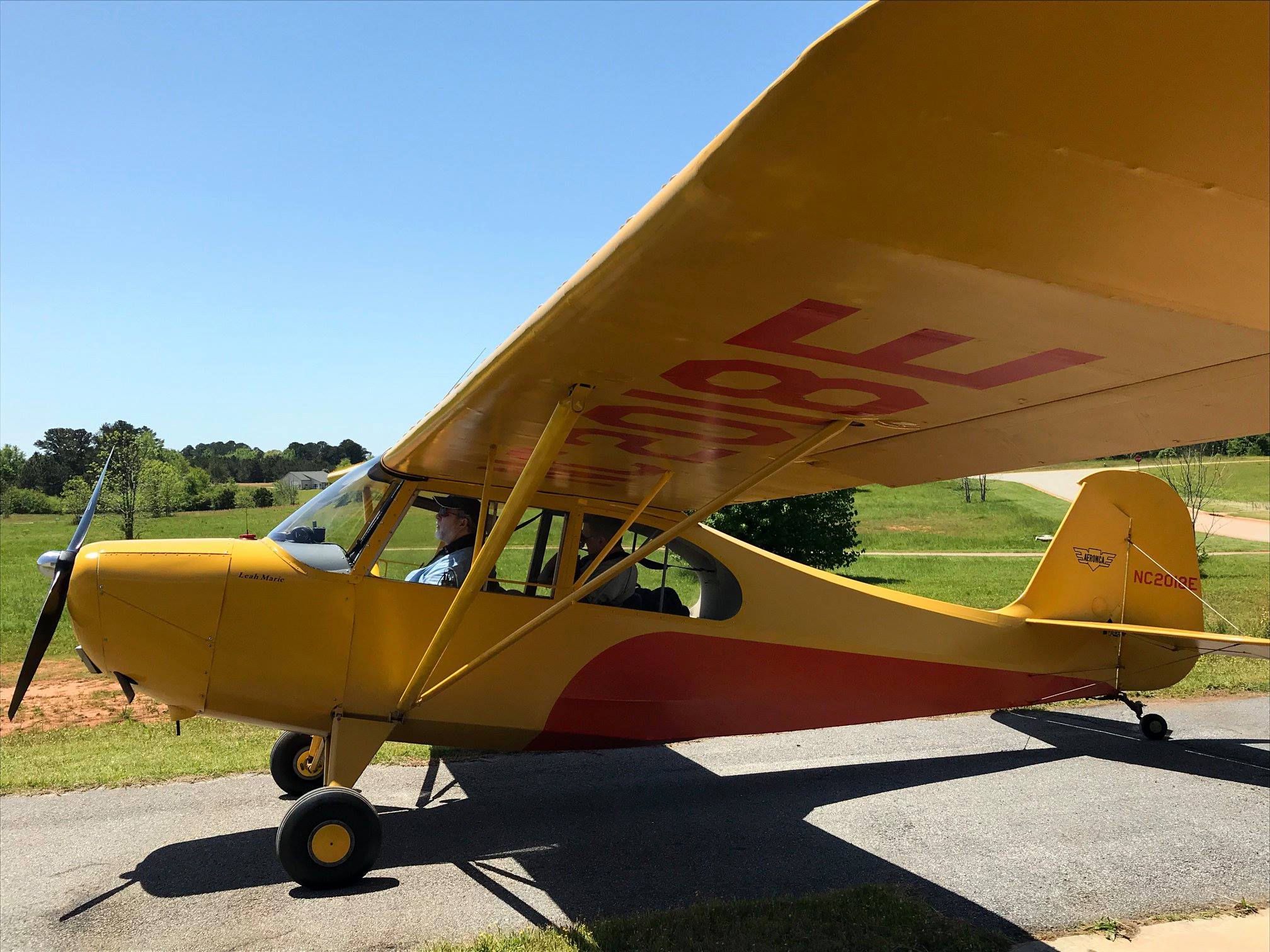You are here
N2018E - 7AC Champ Based at OKK

Pricing
- Regular Club Member: $124 per hour (wet)
- Associate Club Member: $129 per hour (wet)
Restrictions and Requirements
- Student Pilot w/tailwheel endorsement.
- $35K Minimum Required Hull Damage.
- Minimum 15 hours tailwheel time.
- Initial checkout 1 hour minimum.
- Currency 1 hour/month (any tailwheel) or CFI checkout.
Winter Ops and Preheating
Step by Step Procedure:
To start the Champs and Cubs in the winter you first have to get yourself in the right frame of mind. Champs and Cubs do not like to start when it's cold. Not only that but they don't like to stay running even after they start. Once you accept that fact then we can learn how to start them and keep them running. I can tell you this.... once you do get them started it can be a really fun adventure and you'll even be able to brag about the performance... a little!
When the temps are below 32°, keep the heater in the cowl and the blanket on the cowl until right before you pull it out. Once it’s out, don’t delay in getting started.
The best bet is to have someone pull the prop through for you about 8 times with the fuel on and the mags off with your feet on the brakes.
Then give it an additional 6-8 shots of prime. Barely crack the throttle, and start. If it doesn’t start the first time, give it a couple more shots of prime and try again. Do not jockey the throttle up and down, or it will kill the engine.
Once the engine is running, leave it running around 1200 RPM for a while to allow it to warm up before taxiing. **At all times during the flight, even when you’ve been up flying, be GENTLE on the throttle movements. Any abrupt throttle input can and likely will cause the engine to stumble or even quit when the temps are very cold. This is because the Champ carburetor doesn’t have an accelerator pump, so when you adjust the throttle it doesn’t automatically adjust the fuel/mixture. This is a bigger issue in the colder temps.**
When you’re done with the flight, that’s the time to fuel up if at all possible, so that the plane doesn’t have to sit out on the cold ramp for 30 minutes to get fueled up before attempting to go, and so the next person out there doesn’t have to do that either. No Champ solo flights below 25°, and no Champ flights at all below 15°.
Sometimes you can flood an engine but quite frankly it's highly unlikely in the winter time with these 65hp Continental engines. Remember the primer runs directly to the carb (not the cylinders) and fuel dripping on the ground after you operate with the primer does not necessarily mean that you're flooded! However, if you are convinced that it's flooded then simply open the throttle to the full open position and turn the prop BACKWARDS several times (probably 8-12 times) in order to clear out the cylinders.
| Attachment | Size |
|---|---|
| 58 KB | |
| 13 KB | |
| 136.59 KB | |
| 4.24 MB |